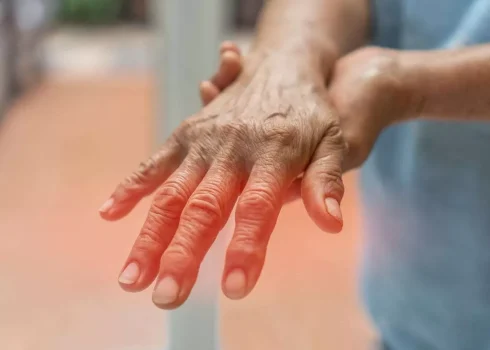Sober living
Youth High-Risk Drug Use DASH

The Monitoring the Future survey is given annually to students in eighth, 10th, and 12th grades who self-report their substance use behaviors over various time periods, such as past 30 days, past 12 months, and lifetime. The survey also documents students’ perceptions of harm, disapproval of use, and perceived availability of drugs. From February through June 2023, the Monitoring the Future investigators collected 22,318 surveys from students enrolled across 235 public and private schools in the United States. Experimenting with drugs or alcohol is tempting for teenagers because they may not know or understand the dangers of using substances—even just once. Academic pressure, low self-esteem, and peer pressure are just a few factors that increase their risk of substance use.
Innovative projects answer NIDA’s challenge to implement substance use prevention in primary care
The United Nations Office on Drug and Crime conducted a national survey on the extent, patterns, and trends of drug abuse in India in 2003, which found that there were 2 million opiate users, 8.7 million cannabis users, and 62.5 million alcohol users in India, of whom 17% to 20% are dependent [13]. According to prevalence studies, 13.1% of drug users in India are under the age of 20 [14]. Supporting the cognitive differences related to attention and inhibition in adolescent alcohol users, youth who consume alcohol also exhibit neural activity differences.
Teenage Drug Addiction: An Overview
If you’re trying to start a conversation with your teen because you think they may be using drugs, their response to being confronted will determine how you’ll need to approach the conversation. While teen drug abuse they may not express it, teens do value bonds with the adults in their lives. Nurturing that connection with them includes being involved in their lives and having open, honest communication.
How Do You Identify Addiction?
There was an additional 20% rise in 2021 compared to the previous year. The highest rates were among Native American and Alaskan Native teens, followed by Latino teens. This video for middle school students describes prescription stimulants, why they are prescribed, and how they can… This video for middle school students describes how synthetic cannabinoids, called K2 or Spice, affect the brain and the… This video for middle school students describes cigarettes, e-cigarettes, vapes, and other tobacco products and provides…
Teen Drug Abuse: Signs, Risks, and Treatment

For the purpose of HIV, STDs, and unintended pregnancy, high-risk drug use is defined as any use by adolescents of drugs with a high risk of adverse outcomes, such as injury, criminal justice involvement, school dropout, and loss of life. This includes the misuse of prescription drugs, use of illegal drugs like cocaine, heroin, methamphetamines, inhalants, hallucinogens, or ecstasy, and use of injection drugs, which have a high risk of transmitting HIV and hepatitis. High-risk drug use increases the likelihood that youth will engage in risk behaviors that can have dramatic, and lasting effects on their health and academic performance. In addition, teens often don’t know or understand the dangers of substance abuse. They may see occasional use as being safe and don’t believe they could become addicted to drugs or face consequences.
Teen Prescription Drug Abuse

The effect of drugs and alcohol on a teenager’s brain can increase the likelihood of developing a mental health disorder.3 Although it’s difficult to prove that substance abuse causes mental health problems, they are closely linked. Reported use for almost all substances decreased dramatically between 2020 and 2021, after the onset of the COVID-19 pandemic and related changes like school closures and social distancing. In 2022, most reported substance use among adolescents held steady at these lowered levels, and these latest data show that this trend has continued into 2023. The percentage of adolescents reporting substance use in 2022 largely held steady https://ecosoberhouse.com/ after significantly declining in 2021, according to the latest results from the Monitoring the Future survey of substance use behaviors and related attitudes among eighth, 10th, and 12th graders in the United States. Reported use for almost all substances decreased dramatically from 2020 to 2021 after the onset of the COVID-19 pandemic and related changes like school closures and social distancing. In 2022, reported use of any illicit drug within the past year remained at or significantly below pre-pandemic levels for all grades, with 11% of eighth graders, 21.5% of 10th graders, and 32.6% of 12th graders reporting any illicit drug use in the past year.
Can Using Drugs Help Me Deal With Anxiety and Depression?
- Research has improved our understanding of factors that help buffer youth from a variety of risky behaviors, including substance use.
- These skills must be taught as a separate curriculum in every school to lower risk.
- It’s worth noting that addiction treatment for teens often looks different from adult treatment.
- Many teens choose to participate in Teen Addiction Anonymous, NA, or AA programs to receive ongoing support, be reminded of why they quit using, and help others.
- This video for middle school students describes what Opioids are, why doctors prescribe them, and how they can be…
Because they primarily revolve around educating students about the dangers and long-term impacts of substance abuse, previous attempts at prevention have all been ineffective. To highlight the risks of drug use and scare viewers into abstaining, some programs stoked terror. The theoretical underpinning of these early attempts was lacking, and they failed to consider the understanding of the developmental, social, and other etiologic factors that affect teenage substance use. These tactics are based on a simple cognitive conceptual paradigm that says that people’s decisions to use or abuse substances depend on how well they are aware of the risks involved. School-based substance abuse prevention is a recent innovation utilized to execute changes, including social resistance skills training, normative education, and competence enhancement skills training.
- Although brain development continues well into adulthood (Spear, 2014), we limit this review to studies using adolescent sample populations with a mean age of 19-years-old or lower to capture the potential effects of drug use during the most dynamic stages of post-childhood development.
- He’s learned that telling teens to warn their friends about fentanyl is more powerful than stoking fear of their own harm.
Illinois, Missouri, and Washington reported deaths from counties that accounted for ≥75% of drug overdose deaths in the state in 2017 per SUDORS funding requirements; all other jurisdictions reported deaths from the full jurisdiction. Jurisdictions reported deaths for all 6-month periods from July 2019 to December 2021. Illinois, Missouri, and Washington reported deaths from counties that accounted for ≥75% of drug overdose deaths in the state in 2017, per SUDORS funding requirements; all other jurisdictions reported deaths from the full jurisdiction.

A Guide to Addiction and Recovery for Teens
They can help connect you to resources and support you in taking more decisive action, like drug testing. Over-the-counter (OTC) and prescription medications can be misused more easily than others because they’re often easy for teens to obtain. Diet pills, caffeine pills, and cold and flu products with dextromethorphan are just a few examples of OTC substances teens may use. They may also have access to family member’s prescriptions for drugs like opiate painkillers and stimulants or get them from friends who do. A study showed that 60% of teens in a community-based substance use treatment program were also diagnosed with a mental health disorder. While drug use can lead to mental health disorders, sometimes it’s the other way around.
Over-the-Counter and Prescription Medications
Sudden drops in academic performance, skipping school, or losing interest in activities they once loved are all potential warning signs. Increased secrecy, new friend groups, or unexplained need for money should also raise eyebrows. With the rise of online betting and in-game purchases, teenagers are being exposed to gambling-like behaviors at an alarming rate. What starts as a harmless game can quickly spiral into a dangerous habit, draining bank accounts and destroying lives. SH drafted the cannabis and alcohol literature review and the “Limitations” section. Besides, SH was responsible for consolidating the review, formatting Supplementary Tables S1–S5, and the formatting of the review.

